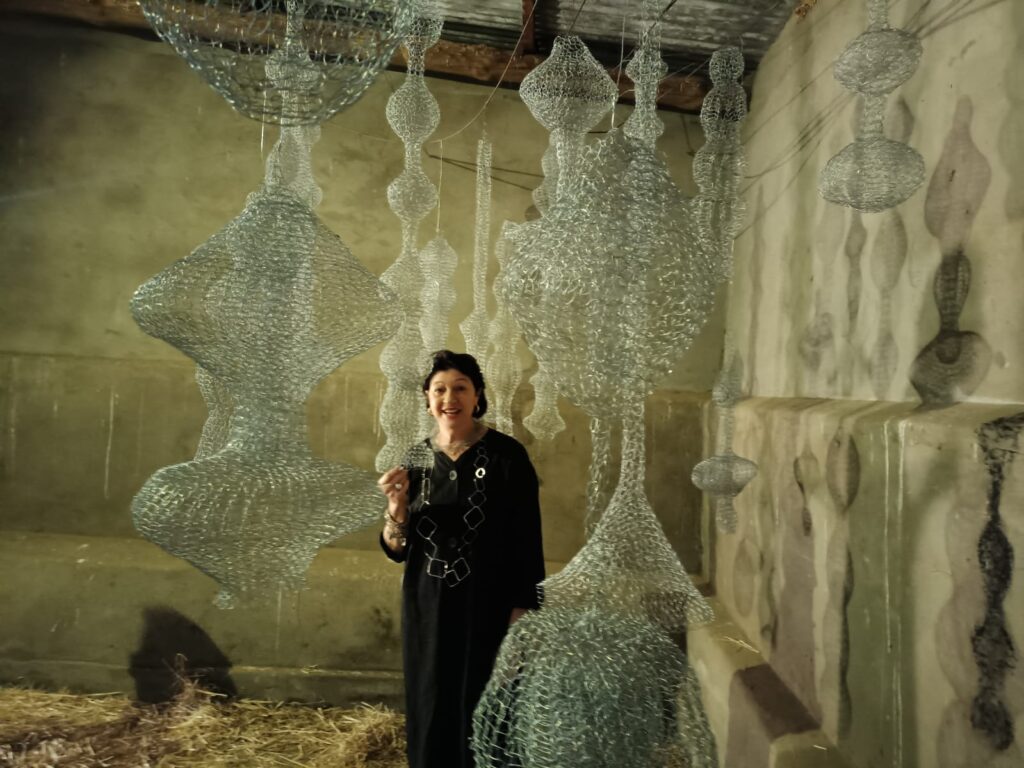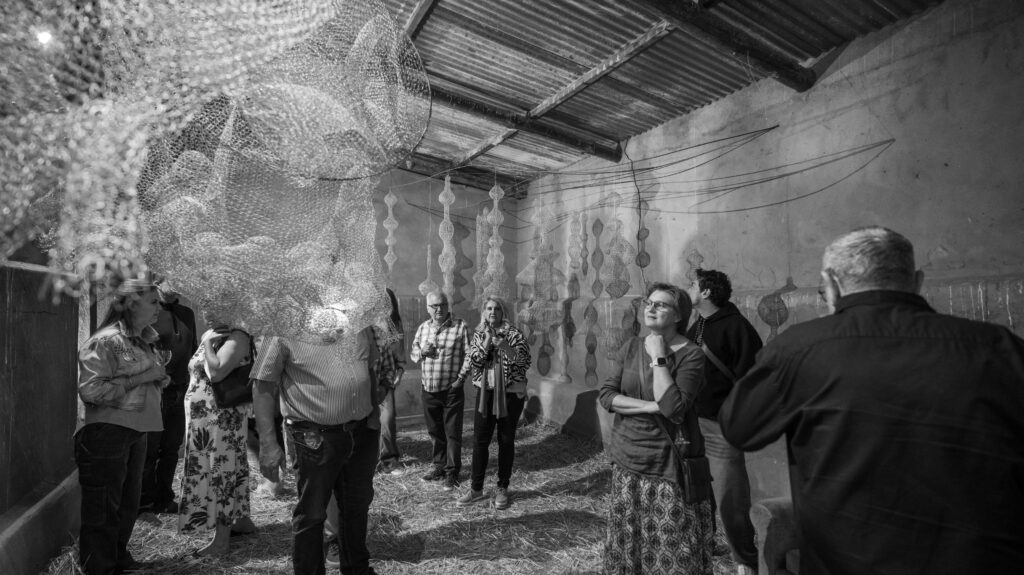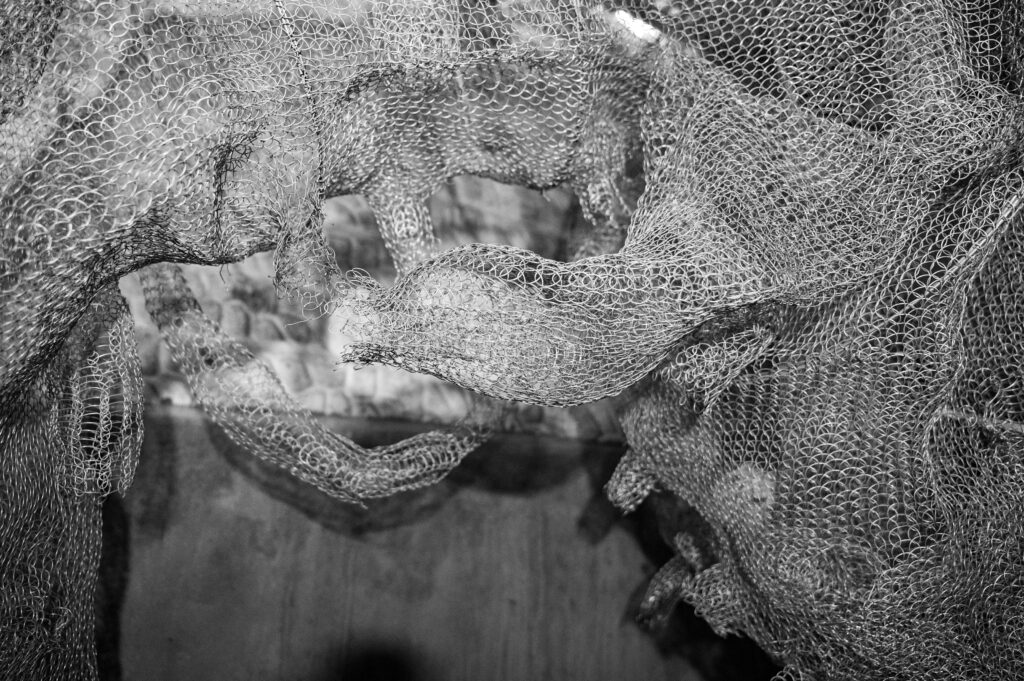The final version to be used for the Assessment
Preparing for my final assessment, I aimed to demonstrate a comprehensive body of work that reflected the technical and conceptual depth I have developed. This process has been challenging and rewarding, offering an opportunity to reflect on how my practice has evolved and how I intend to sustain it beyond my studies. Reflecting on my journey through this course, I recognize a profound transformation in my practice and art-making approach
A pivotal shift in my practice occurred as I transitioned from painting and drawing to creating wire installations. For much of my studies, I focused on painting and charcoal drawings, enjoying the immediacy of mark-making and the intimacy of working on paper or canvas. However, personal experiences, particularly the loss of my youngest son, began to steer me toward other forms of expression. This shift was catalyzed by an earlier feather installation I created—a work deeply connected to themes of loss, healing, and my enduring relationship with nature.
Wire became a profoundly significant medium for me. Its inherent qualities—rigid yet flexible, industrial yet malleable—reflected the complexities of my emotional state. Shaping wire mirrors the repetitive, meditative gestures of drawing but demands a tactile immediacy that requires physical engagement. Unlike painting, working with wire allowed me to create forms that occupy space and interact dynamically with light and shadow.
The sociable weaver nests offered a vital metaphorical anchor during this transition. These massive, communal structures embody care, resilience, and interdependence—qualities I sought to explore in my work. The nests’ duality, providing both protection and potential confinement, resonated deeply with my exploration of grief and healing. Moving into installation-based work allowed me to mirror these ideas, creating work that invites contemplation of home, community, and our connections with the natural world.

This transition encouraged me to rethink space and audience. My wire installations inhabit space, creating immersive environments. For instance, my piece Hotel Kalahari—a more than two-meter-tall wire nest weighing 30 kilograms—invites viewers to move around, experience its shadows, and engage with it as both object and environment. This shift expanded my practice, allowing me to consider the form of my work and its relationship to the spaces it inhabits and the audiences it engages.
The final body of work I presented reflected this evolution. The wire nests, with their intricate layers and interplay of light and shadow, represented not only a technical achievement but also a conceptual deepening of my practice. Here, the ideas of Heterotopia became part of my exploration of place and space. It is a place that exists apart from everyday life, but viewers can contemplate the interplay between nature, culture and place.

Feedback from peers and tutors highlighted the immersive quality of the installation, which conveyed the balance between vulnerability and strength inherent in both the material and the concepts explored.
Working with wire has enhanced my ability to translate conceptual ideas into tangible forms. The repetitive process of weaving wire requires patience, precision, and deep material engagement. The shift from 2D to 3D work challenged me to develop new skills, such as working at scale and considering the spatial dynamics of installation art.
Understanding the professional context of my practice has also been crucial. Research and discussions deepened my understanding of how contemporary artists navigate the art world, from engaging with institutions to connecting with audiences in non-traditional spaces. My work, which resonates with ecological and social resilience themes, situates itself within broader conversations about sustainability and community. This context has informed strategies for sustaining my practice, including exploring site-specific installations, collaborations with community organizations, and artist residencies.
Presenting my work has been a valuable learning experience. Preparing Hotel Kalahari for exhibition required careful consideration of its installation and accompanying materials, such as my artist statement and documentation. I attempted to present the work as a heterotopic space where the material and symbolic ideas collide. In hindsight, I would add wall text to emphasise the almost poetic aspects of this space – ideas of stillness and fragility would work. Reflective writing has become a key tool for articulating my ideas and connecting with audiences, a practice I intend to continue.

Looking forward, I aim to build on the themes, materials, and methods that have shaped my work during this course. The transition to installation-based practice has opened new possibilities for engaging with audiences and creating immersive experiences. I am particularly interested in further exploring the relationship between light, shadow, and form and fostering dialogue around themes of care and community. Developing a practice plan that includes residencies, collaborations, and public installations became essential for sustaining and expanding my practice.
Reflecting on this journey, I am struck by the evolution of my practice. I have benefited from positive tutoring and interactions with OCA student groups, social media posts and local artists in my community, which inspired me to expand my technical and conceptual skills, introduce new contexts and audiences, and embrace the possibilities of interdisciplinary practice.
Video recording of my Reflective Evaluation: https://youtu.be/PGUuAYlNGF0?si=hTHS168_08fZBUxS